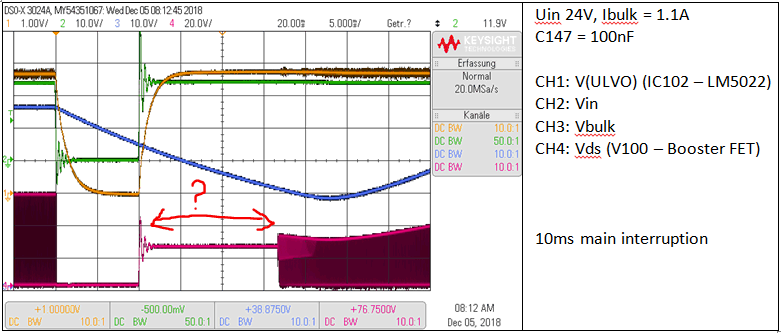Dear team,
we are facing a challenge with the LM5022 during start up. We want to minimize the time until the PWM starts switching but then have a slow soft start.. Basically a two level soft start. When selecting the SS ramp needed (470nF) the PWM starts switching with a delay of about 17ms once the VIN ramps up. See the plot attached. We want to minimize this delay but then maintain the SS ramp.
We would like to understand the following implementations to find a potential workaround:
1) how is the SS discharge circuit being implemented? Is the a FET plus a serial diode as shown in the block diagram? and what would be the remaining voltage tolerance one can expect when this charging the SS pin / cap.
2) How is the 1.4V at the comp pin implemented? Is it some sort of REF, voltage divider or diodes? What is the tolerance of the 1.4V.
3) According to the datasheet it seems the 1,4Vat the Comp pin is tracking the remaining SS voltage, can you confirm? how is this done?
From what we can see in the measurements, the PWM starts switching once the COMP pin voltage crosses the said 1.4V. Our idea is to precharge the comp pin, so the time until we reach the 1.4V threshold is minimal, the part starts switching and then SS ramps up slowly.
Or do you have another suggestion?
many thanks
Lutz



